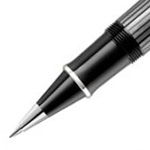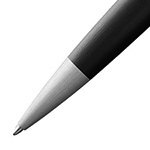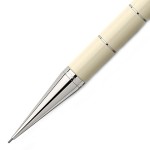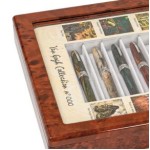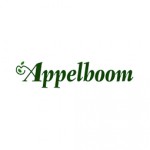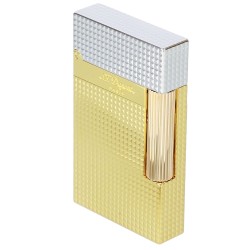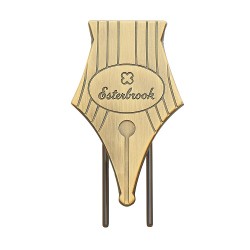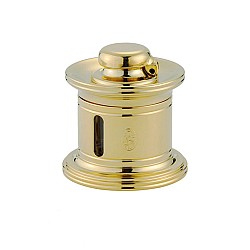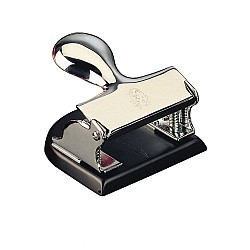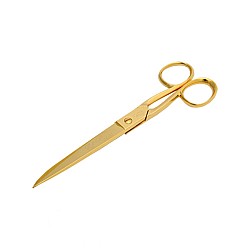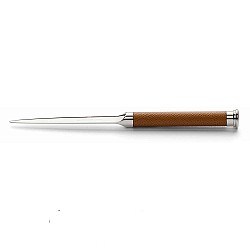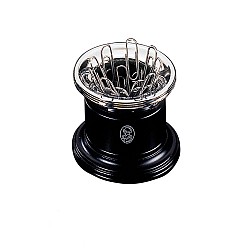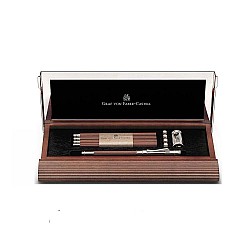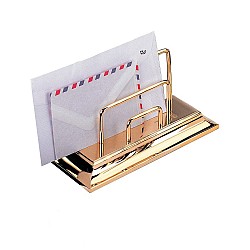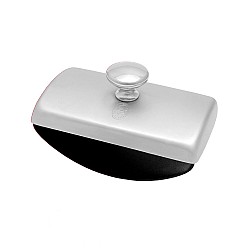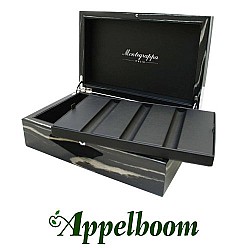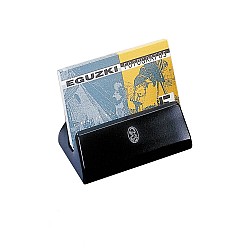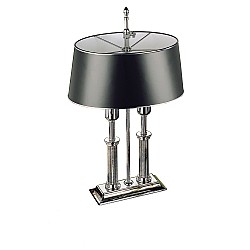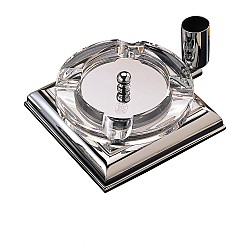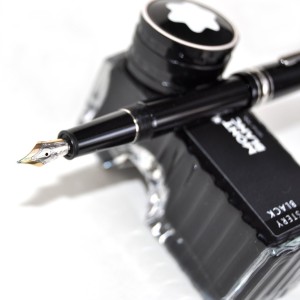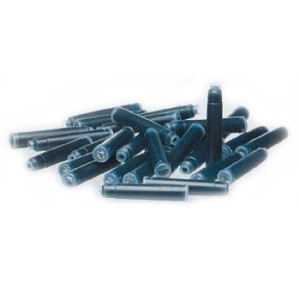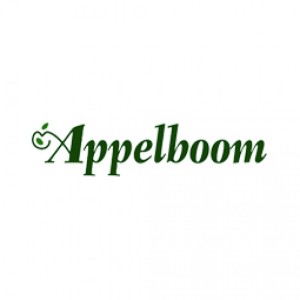Fountain pen filling systems
On this page you will find information on several filling systems for fountain pens. Appelboom is happy to advise you, please do not hesitate to contact us in case you have any questions
Top 5 Fountain pen filling mechanisms
Ink cartridges
Make sure you have a cartridge that will work in your pen. You're usually safe buying the cartridges made by the same company that made the pen, but many pens (generally European) use a standard design making these cartridges more or less interchangeable.
If you use cartridge pens, you should consider switching to a bottle fill converter; not only is this more economical (not to mention more environmentally sound), but you're flushing out the feed every time you fill, so it will stay cleaner and will be less likely to clog).
Converter
The converter (or convertor) is a refillable cartridge with a small piston mechanism (see below). The converter can be removed and substituted by a disposable cartridge.
Fill a pen as follows: unscrew the gripping section from the pen and turn the piston of the converter counterclockwise (the piston goes down). Then, place the nib in the ink bottle (submerged) and turn the converter clockwise making the piston come up: you will see the reservoir filling with ink. This procedure may be repeated until the reservoir is full enough.
Some converters do not have a piston mechanism, but have a rubber sac with push mechanism. The principle is the same: when pushing on the designated space on the converter, whilst the nib is submerged in the ink bottle, and releasing the pressure the converter will be filled.

Below a movie of a Visconti Converter.
Piston
Most "better" convertible pens today, like Waterman and Montblanc, have piston-fill converters. The chief advantage of these is that they can be broken down and cleaned should they dry out; also, with the ink reservoir being totally transparent, you can see how much ink is left in the pen at any time.
To fill a piston filler, immerse the point completely in the ink bottle, then twist the knob (or push the slide on more recent Parker converters) until the piston is all the way down. Then, move the piston back up, drawing ink into the converter. Again, repeat this to completely fill the converter if it was pretty empty to start with.
Remember to "prime" the pen by releasing a few drops of ink after filling, then screw the piston back up to the top.

Below a movie of a Visconti Piston.
Tibaldi ''Perfected'' Piston
The "perfected" piston filling mechanism, secured by exclusive Tibaldi patent, which may be compared to the winding mechanism of a high quality watch. Rotating the blind cap, when filling the pen, has the same sound and feel as manually winding a watch crown. What's more, the mechanism applies a slight resistance to rotation, avoiding brusque movements at the bottom of the pen reducing the risk of accidental leakage.
Lever Filler
The great majority of older (pre-1960) pens you will see will be lever fillers, which have a small lever (usually nickel or gold plated metal) running lengthwise down the side of the barrel. Immerse the point completely in the ink bottle. Using a fingernail, flip the lever out to a 90 degrees angle (or as far as it will go without forcing it) to collapse the sac (this will eject any ink remaining in the sac, so clean the pen first if you're changing colors). Then, flip the lever back in place and leave the point in the ink for a few seconds. Remove the pen and wipe down the point. Typically, no priming is necessary as with a piston fill pen.
Power Filler
This internal system causes sometimes confusing when filling. From the back end of the barrel, unscrew the blind cap and pull the rod all the way out stopping when you meet resistance. Submerge the nib into the ink until the front end of the section is covered and depress the plunger downward with one single stroke. Count to ten (allowing the pen to fill) and then remove from the ink and screw the blind cap back into the barrel end.

Below a movie of a Visconti Power Filler.
Visconti Mosquito Filler
The Visconti Mosquito ink filling adaptor may only be used together with the new Smartouch nib. This interesting device attaches to the end of the pen and is used to fill the pen with ink. The adaptor avoids dipping the pen directly nib into ink and at the same time every last drop of ink will be used from the ink bottle.
Below a movie of a Visconti Mosquito Filler.
Push Button
Parker's button fill was an effective response to the Sheaffer lever fill system, and was used through to the 1940s. Since Parker pens were so widely copied in other respects, it isn't surprising that the button filler appears on many other brands as well. Remove the blind cap (don't lose it!), mash the button to expel old ink, hold the button down, then release it with the point completely inside the ink supply. Give the pen ten seconds or so to fill, then remove it, wipe the point, and replace the blind cap.
Eyedropper
If you have a very old pen, and it has no visible means of filling (e.g., no lever), chances are that it is an "eyedropper filler", basically a big empty vial into which you drip ink from an eyedropper. Unscrew the point-section assembly from the barrel. Use an eyedropper (some drug stores still carry glass eyedroppers) to draw ink from the bottle and fill the barrel. Replace the section and screw down tight to make a good seal. Needless to say, keep the barrel upright during all this!
Should your eyedropper pen leak (as they are often prone to do), you can try rubbing some cake soap or wax on the threads to make a better seal.
Ink cartridges or ink bottle?
Using pens with an internal filling system (like an eyedroper or piston fountain pen) means most of the times your pen can bear a lot more ink than cartridge/converter pens. Using an ink bottle also means you will get more ink for your money than with the same money spent on cartridges (cartridges tend to be more expensive). Also, using an ink bottle is more environment-friendly and you have a lot more choice on colours and brands.
Using ink cartridges means ease of use, bringing these with you is easier than bringing an ink bottle and also filling a pen is simpler.
This overview is not complete: pen producers are still inventing new filling systems and there are also many vintage pens, which use different filling systems. Please do not hesitate to contact us in case you have questions about filling systems or would like our advice.







